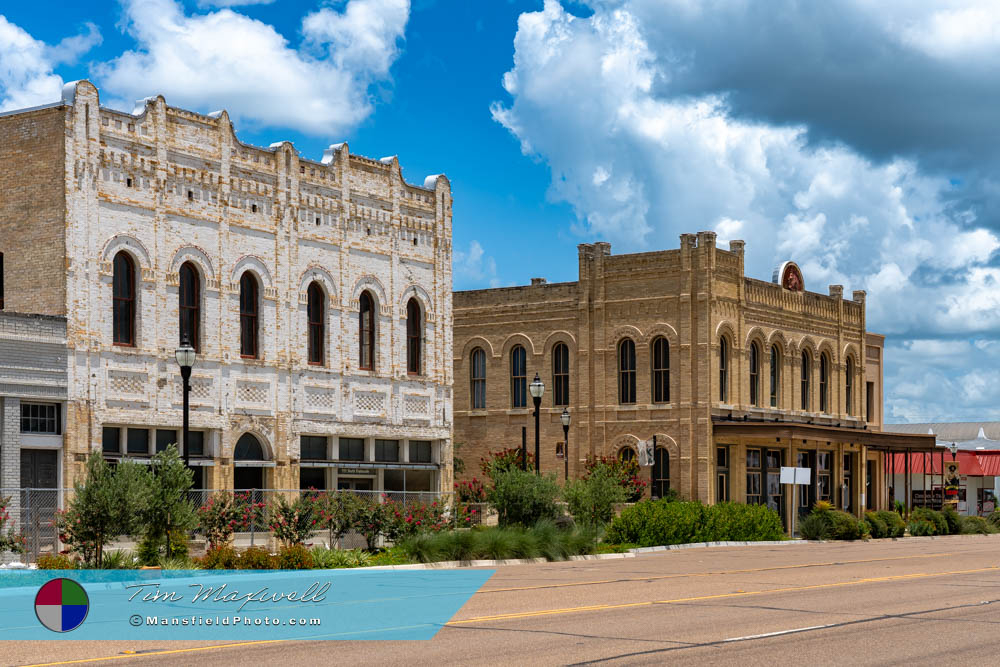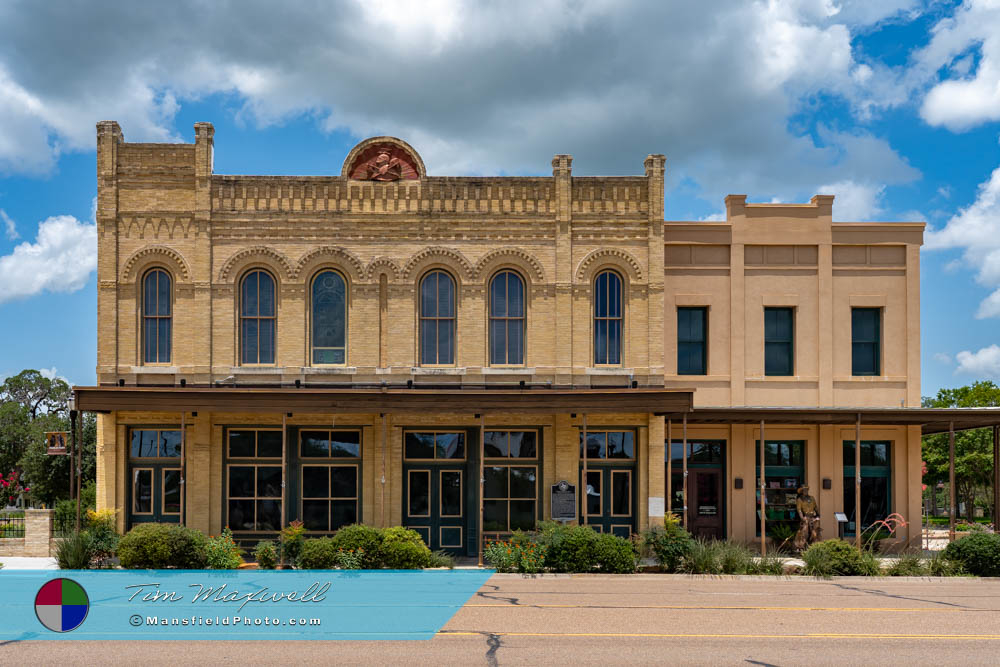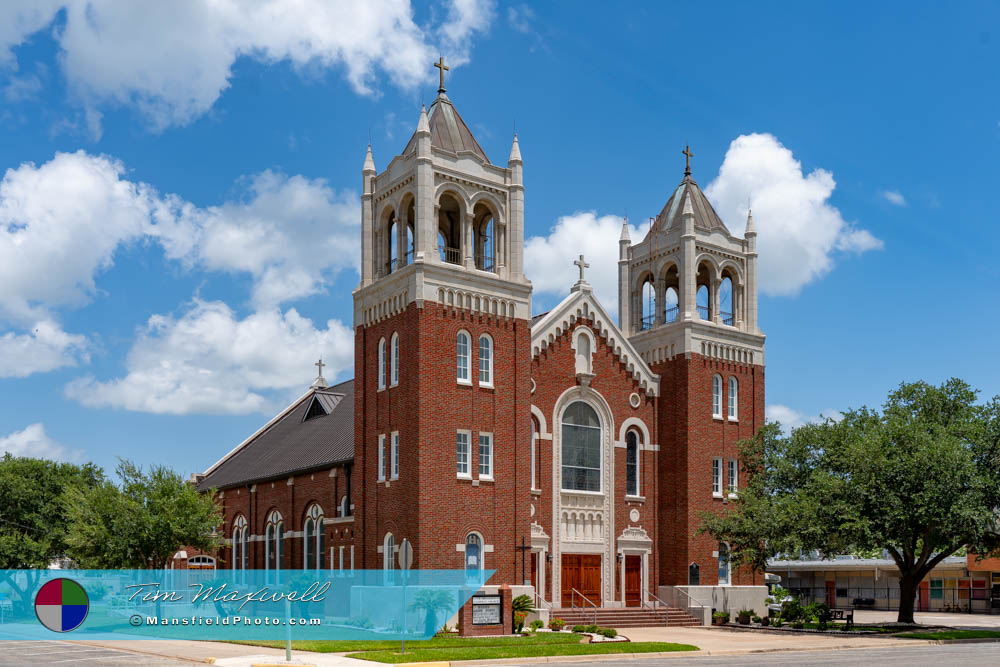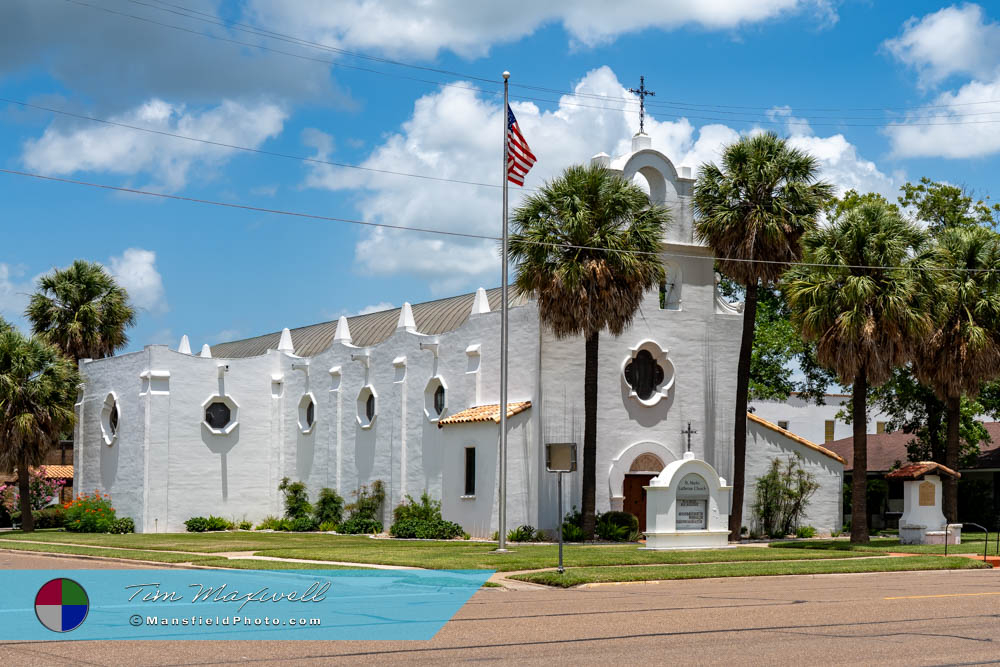Mansfield Photography
Cuero, Texas
– Where the Chisholm Trail Still Echoes.
Cuero, Texas, might be one of the most underrated towns in the state when it comes to history, architecture, and culture. Located in DeWitt County, this town once played a vital role in Texas cattle drives and commerce. Today, it boasts one of the most impressive historical museums in the Southwest, grand historic churches, a courthouse worthy of admiration, and a downtown that feels like stepping into another century—without ever feeling frozen in time.
From Turkey Roost to Texas Town
Founded in 1872 and incorporated a year later, Cuero developed on the heels of the Texas and Mexican Railway reaching the region. The town was named after “Cuero Creek,” which had long been a prominent geographical feature nearby. The name “Cuero” comes from the Spanish word for “hide” or “leather,” fitting for a town that once served as a central hub for cattle drives during the heyday of the Chisholm Trail.
Before the railroads came, the area was a critical crossing for cowboys moving longhorns up the trail to Kansas railheads. The coming of the train brought rapid change, allowing the town to flourish as an agricultural and livestock center. It also absorbed nearby Indianola’s displaced residents after hurricanes destroyed that coastal city, further boosting its growth.
The Chisholm Trail Heritage Museum
At the heart of Cuero’s modern-day draw is the spectacular Chisholm Trail Heritage Museum. Housed in the renovated Knights of Pythias building—an architectural treasure itself—the museum offers a high-caliber experience unlike what most small towns could dream of hosting. Visitors are treated to beautifully curated exhibits detailing cowboy life, cattle drives, ranching traditions, and the influence of multiethnic communities that shaped the region.
This isn’t a dusty room of artifacts. It’s an immersive, professionally designed experience with modern storytelling techniques that make history come alive. Currently undergoing expansion, the museum continues to grow, and each addition adds depth to its already comprehensive narrative. This museum alone could justify a trip, but it’s only the beginning of what Cuero has to offer.
A Downtown That Whispers of the Past
Few Texas towns preserve their downtown core with such care. Cuero’s streets are lined with turn-of-the-century storefronts, most still in use, many restored to their original grandeur. A walk through downtown feels like paging through a history book brought to life. Whether you’re popping into an antique store, admiring ironwork balconies, or photographing ornate brick facades, the atmosphere is both authentic and welcoming.
These buildings tell the story of a town that once rivaled Victoria in regional importance and continues to pride itself on preserving what was built by those who came before.
DeWitt County Courthouse – Architectural Majesty
Anchoring the heart of the town is the DeWitt County Courthouse, a standout example of Romanesque Revival architecture designed by famed Texas courthouse architect Arthur O. Watson. Completed in 1896, it commands attention with its towering clock, intricate stonework, and symmetrical proportions. The interior, too, is a marvel—especially the soaring rotunda and detailed woodwork. The courthouse remains an active center of county affairs but doubles as a monument to the grandeur and civic pride of 19th-century Texas.
Saint Michael’s and Saint Mark’s – Sacred Beauty
Adding to the town’s architectural and cultural appeal are its historic churches. Saint Michael’s Catholic Church is a stunning Gothic Revival structure with arched windows, pointed spires, and a commanding presence. The interior is no less beautiful, with stained glass windows bathing the pews in colorful light and carved altars offering a sense of timeless devotion.
Just as impressive in its own way is Saint Mark’s Lutheran Church. Its historic sanctuary and longstanding congregation reflect the strong German heritage of the town, a legacy brought by settlers who arrived in waves during the mid-1800s. These churches not only serve their communities faithfully but also enrich the visual and historical fabric of the town.
📸 Interested in More Photos of This Town?
More Than Just History
Cuero isn’t simply about the past. It’s a town that finds joy in tradition and celebration, most famously with its annual Turkeyfest. This quirky and spirited event honors the town’s long-standing connection to turkey farming with a weekend of festivities that includes a turkey trot race, music, and even turkey races featuring live birds with out-of-town challengers. It’s offbeat, it’s local, and it’s proud—and it captures the soul of the community like few other events can.
The town is also becoming increasingly popular with travelers interested in photography, architecture, and small-town exploration. Whether you’re a history buff, a weekend wanderer, or a traveler looking for authentic Texas, Cuero delivers in a way that’s genuine and unpolished.
📍 Interested in exploring Texas’ history?
Check out our article on nearby Goliad, Texas — a Texas bucket list town, and full of early Texas history!
The Present and the Promise
Today, Cuero maintains a steady population and remains a hub for ranching and farming in South Central Texas. Efforts to preserve and promote its heritage are visible everywhere—from the carefully restored downtown to the evolving vision of the Chisholm Trail Heritage Museum. Residents take pride in their past but keep their eyes on the future, ensuring that the spirit of the trail, the pride of its builders, and the beauty of its buildings remain for future generations to experience.
If you’re mapping out a journey across Texas and looking for more than just a roadside stop, make room for this town. From museums to historic churches, courthouse tours to quirky turkey races, it has a way of surprising visitors with just how much there is to see, learn, and love.









